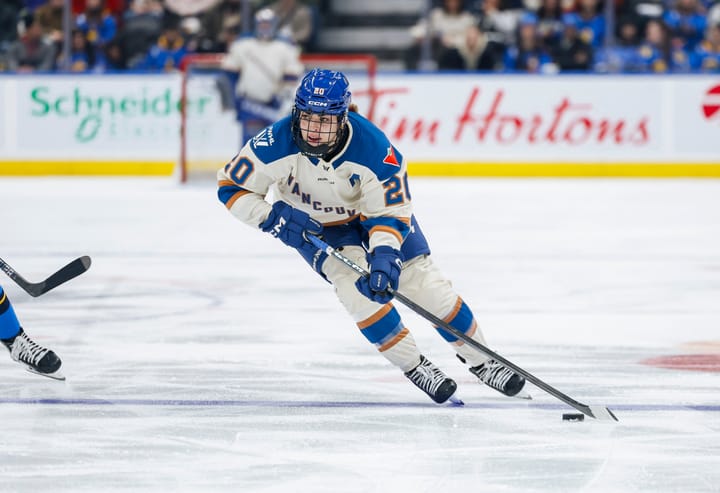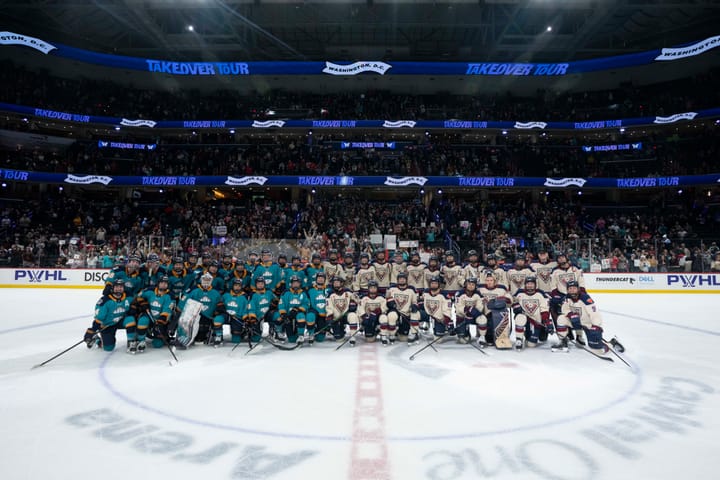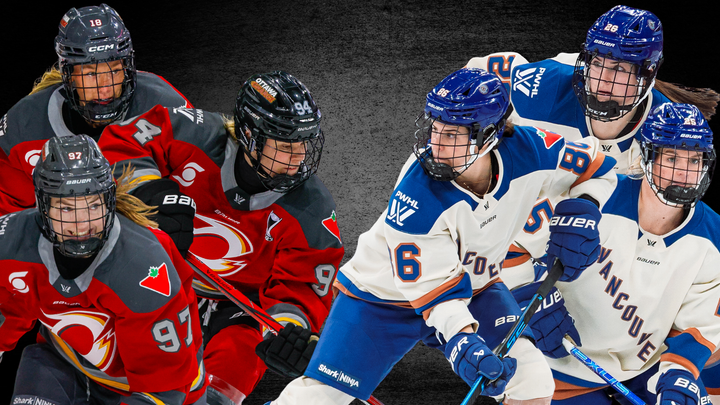Jenni Asserholt taking next step in hockey journey
A year after leaving the Swedish National Team, former Damkronorna captain focuses on the SDHL
After thirteen seasons, an Olympic silver medal, a captaincy, and an acrimonious departure from Team Sweden, HV71 forward Jenni Asserholt welcomes the respite.
“The time off from the national team has also given me more time to take care of my body and give myself better recovery,” she said.
Asserholt, who recently turned 29, has welcomed the opportunity to direct her energy to more than just ice time: “I’ve kept myself busy and I have been fortunate to work in the marketing section and also with the girls program in the club to make women´s hockey develop and grow in the city of Jönköping,” she said.
Jönköping, in southern Sweden, is home to HV71, one of ten teams in the Svenska DamHockey Ligan (SDHL). The league was founded as Riksserien in 2008; it rebranded to SDHL at the start of the 2016 season. Assherholt came to HV71 in 2015 from Linköping HC, where she played for seven years and captained the team to back-to-back Riksserien championships in 2014 and 2015. The two clubs set an SDHL attendance record last season, playing in Jönköping for a packed house of 4,563 fans on February 5, which she called “a huge step for the development of women’s hockey.”
“Right now I’m happy to be representing HV71”
The time away from the national team has also given Asserholt a chance to regroup. Her decision to leave Team Sweden last August sent shockwaves through an already tenuous landscape and was, in many ways, the public culmination of long-standing conflict between the team and head coach Leif Boork. A number of players, Assherholt included, had already petitioned the Swedish Ice Hockey Association for Boork’s removal earlier in the summer in an extraordinary move that proved unsuccessful.
Boork's tumultuous tenure as coach has both polarized and baffled observers. The Damkronorna finished the 2016-2017 season with their worst record in 14 years, yet Swedish Ice Hockey Association chairman Anders Larsson maintains their goal is to fulfill Boork’s contract through 2018. The more generous media attention questions Boork’s personnel decisions and wonder why Asserholt and star Luleå defenseman Emma Eliasson - cut from the team last summer after a feud with Boork - are no longer representing their country at the highest level. Others, including former players and SDHL executives, take a more unflinching approach and call for the Swedish Ice Hockey Association to relieve him of his position before the next Olympics.
Asserholt declined to comment on Boork. While she didn’t completely rule out a return to the national team for PyeongChang in 2018, she emphasized her commitment to her club: “Right now I’m happy to be representing HV71, so I want to keep working hard here and see how far we can go. If a spot opens up for the national team, the next step is to look into that then.”
A team on the rise
Like the other nine teams in the SDHL, HV71 shares a name and an organization with their men’s top-tier SHL counterparts. While the amount of support given to the women’s side varies from club to club, Asserholt praised HV71’s commitment to the women’s team, saying, “We have great support from the club.”
The benefits of that support are showing on the ice: HV71 climbed from sixth to fourth in the SDHL regular-season standings and reached the finals after sweeps in both the quarterfinals and semifinals. The semifinal victory in particular stands out to Asserholt as a marker of just how far HV71 has come, since “the win...was a huge success and also unexpected because we faced the number one team in the series, Luleå Hockey, that won last year’s championship.”
While HV71 ultimately fell to Djurgårdens IF and earned a silver medal, Asserholt had nothing but praise for her team’s effort last season and is confident in their ability to win their first title: “We have one more year of experience and want more, we have to work hard every day this summer and continue the upcoming season the way we ended this one...we look forward to the next season and are very motivated and inspired for what’s coming.”
“We have great support from the club.”
It would be easy to dismiss that as a cliché or as a canned response from an athlete accustomed to the media’s questions, but even over written correspondence Asserholt radiates warmth and sincerity. She’s open and gracious with her time, very approachable without hesitating to set clear limits. She’s not saying the right things just to say them: she means every word and seeks to lead by example.
That attitude and aptitude for leadership earned her the HV71 captaincy this year in only her second season with the team, as well as her expanded role in the organization. Her efforts have not gone unnoticed in the community either: just days ago she was honored by the city of Jönköping, given April’s Person of the Month award “for being a driving force to increase interest in women’s hockey in Jönköping.”
“We are ahead of many countries”
Asserholt has played in the the SDHL since its inception and has had a front-row seat to the league’s growth into the premier European destination for elite female players. “We will have many players representing at the 2018 Olympic games in South Korea in February,” she said, speaking of the both the Swedish players and the 80 imports including international stars like Finland’s Michelle Karvinen, Canada’s Jennifer Wakefield, and Switzerland’s Florence Schelling.
She is realistic about both the SDHL’s progress and how far there is to go: “Still we are far away from having equal conditions like the men’s professional league SHL,” said Asserholt, but she’s quick to point out that “when it comes to funding and better playing conditions it has taken positive steps as well.”
“When it comes to the hockey development ice times, facilities and sports growing, we are ahead of many countries, and the league itself is now working with funding and sponsor management to take the game to the next level,” Asserholt asserted.
As the SDHL’s profile continues to grow, so too does the game at its most fundamental level: with young girls.
“If you look at the numbers of players, we have increased the age group 5-10 years old with 66% in the last 2 years,” said Asserholt. “Young girls have found this fantastic sport and the old-school mindset about only boys are playing is fortunately almost gone.”





Comments ()